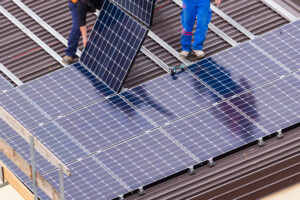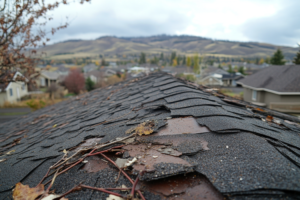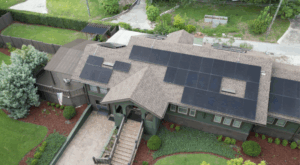As more homeowners embrace renewable energy, one of the most common questions we hear at AGU Roofing & Solar is: How long do solar panel roofs last? Whether you’re considering solar panels for your existing roof or investing in an integrated solar roofing system, understanding the lifespan and long-term performance of solar panels is essential to making a smart, cost-effective decision.
Solar panel technology has come a long way in the last two decades. Today’s solar roofs are designed to be durable, efficient, and low maintenance—providing clean energy for 25 years or more. But what actually affects the lifespan of a solar panel roof? And how can you get the most out of your investment?
This in-depth guide explores those questions and more, giving you everything you need to know about solar panel longevity, warranties, and performance over time.
Average Lifespan of Solar Panel Roofs
Solar panel roofs are built to last. On average, most traditional solar panels come with a lifespan of 25 to 30 years, though many systems continue producing electricity well beyond that timeframe—just at a reduced efficiency.
Typical Solar Panel Degradation Rate
Solar panels don’t just stop working after 25 years. Instead, they slowly lose efficiency over time. According to the National Renewable Energy Laboratory (NREL), the average degradation rate of solar panels is about 0.5% per year. That means after 25 years, your panels could still be operating at roughly 87–90% efficiency.
So while warranties might end after 25 years, your solar system could still be helping lower your electricity bills well into its 30s—with little maintenance along the way.
Lifespan of Solar Roofing Materials vs. Panels
A solar panel roof includes both the photovoltaic (PV) system and the roofing structure it’s mounted on or integrated into. To understand the true lifespan, it’s important to evaluate both:
1. Traditional Solar Panels on Asphalt Roofs
- Solar Panels: 25–30 years
- Asphalt Shingle Roof: 20–30 years
If your shingles are nearing the end of their life, it’s best to replace your roof before or during solar installation. Removing panels later to replace the roof can add costs.
2. Integrated Solar Roofing Systems
Products like solar shingles combine roofing and solar functions into one system. These typically last:
- Solar Shingles: 25–30 years
- Roofing Surface: 25–40 years depending on material
At AGU Roofing & Solar, we often recommend integrated solar roofing for homeowners replacing old roofs who want a clean, low-profile look and long-term durability
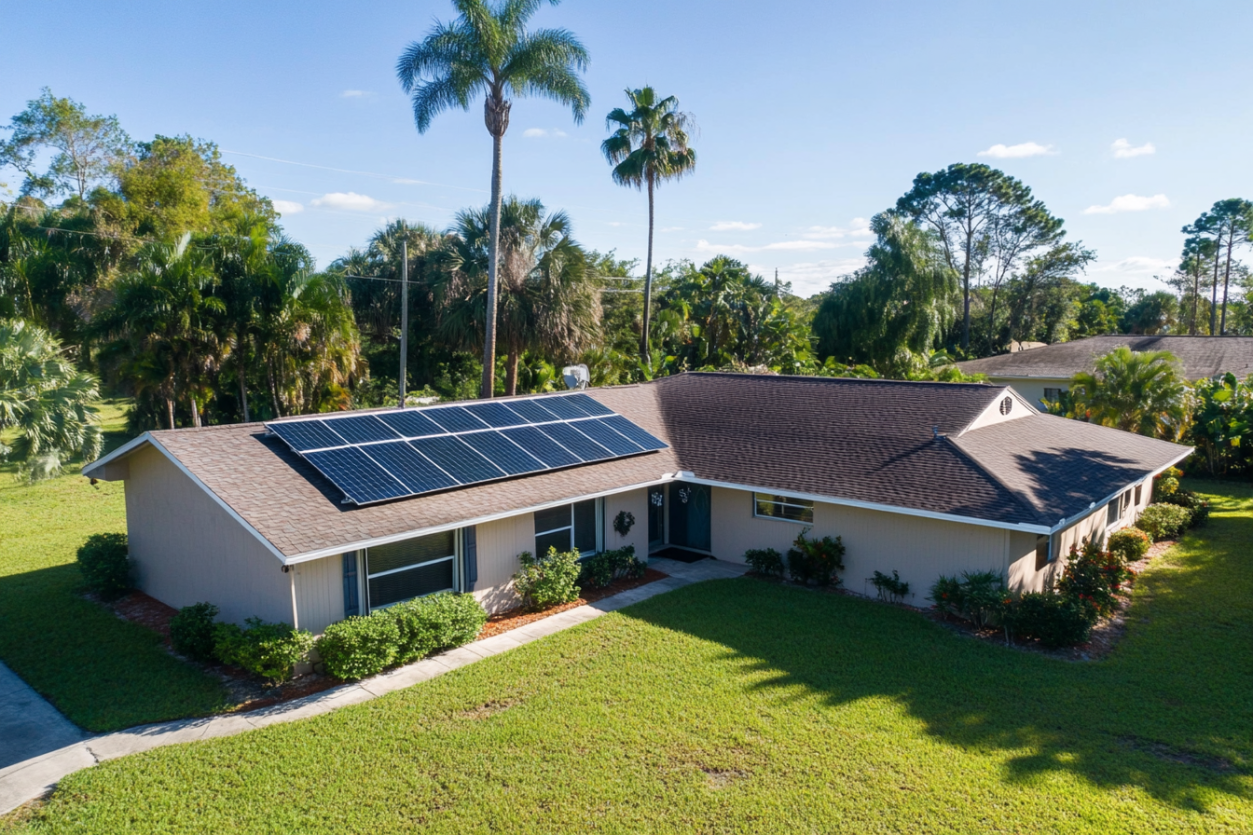
What Impacts Solar Panel Roof Lifespan?
While most solar panels are designed for long life, several factors can affect how well they perform over the decades.
1. Quality of Materials
Not all solar panels are created equal. Premium panels from leading manufacturers often come with stronger warranties, better efficiency, and slower degradation.
2. Installation Quality
Improper installation can lead to poor performance or even early failure. Panels need to be securely fastened, properly wired, and optimally angled for sun exposure. At AGU, we use only certified solar professionals to ensure your system performs safely and efficiently.
3. Climate and Weather Conditions
Solar panels are built to withstand rain, wind, and hail, but extreme weather events can reduce lifespan if damage occurs. Fortunately, most high-quality panels are tested to endure wind speeds up to 140 mph and hail up to 1 inch in diameter.
4. Maintenance and Monitoring
Solar panels require minimal upkeep, but occasional cleaning and inspections help ensure optimal performance. Checking for debris, leaves, or shading issues can prevent energy losses and extend your system’s life.
What Do Solar Warranties Cover?
Understanding your solar warranty is key to protecting your investment. A typical solar panel warranty has two main components:
1. Product Warranty
Covers the physical integrity of the panel—defects, premature failure, or manufacturing issues.
- Standard: 10–25 years
2. Performance Warranty
Guarantees that the panel will maintain a certain level of power output over time. Most offer:
- 90% production for the first 10–12 years
- 80–87% production through year 25
Some of the most reliable manufacturers even offer 25-year product and performance warranties together. Be sure to ask your installer what warranty coverage is included with your system.
Solar Inverter Lifespan
While panels can last 25+ years, inverters (which convert solar energy into usable electricity) may have a shorter life.
Typical Inverter Lifespan:
- String Inverters: 10–15 years
- Microinverters or Power Optimizers: 20–25 years
Replacing an inverter is a normal part of solar ownership and should be factored into long-term maintenance planning. Higher-end systems often come with longer inverter warranties.
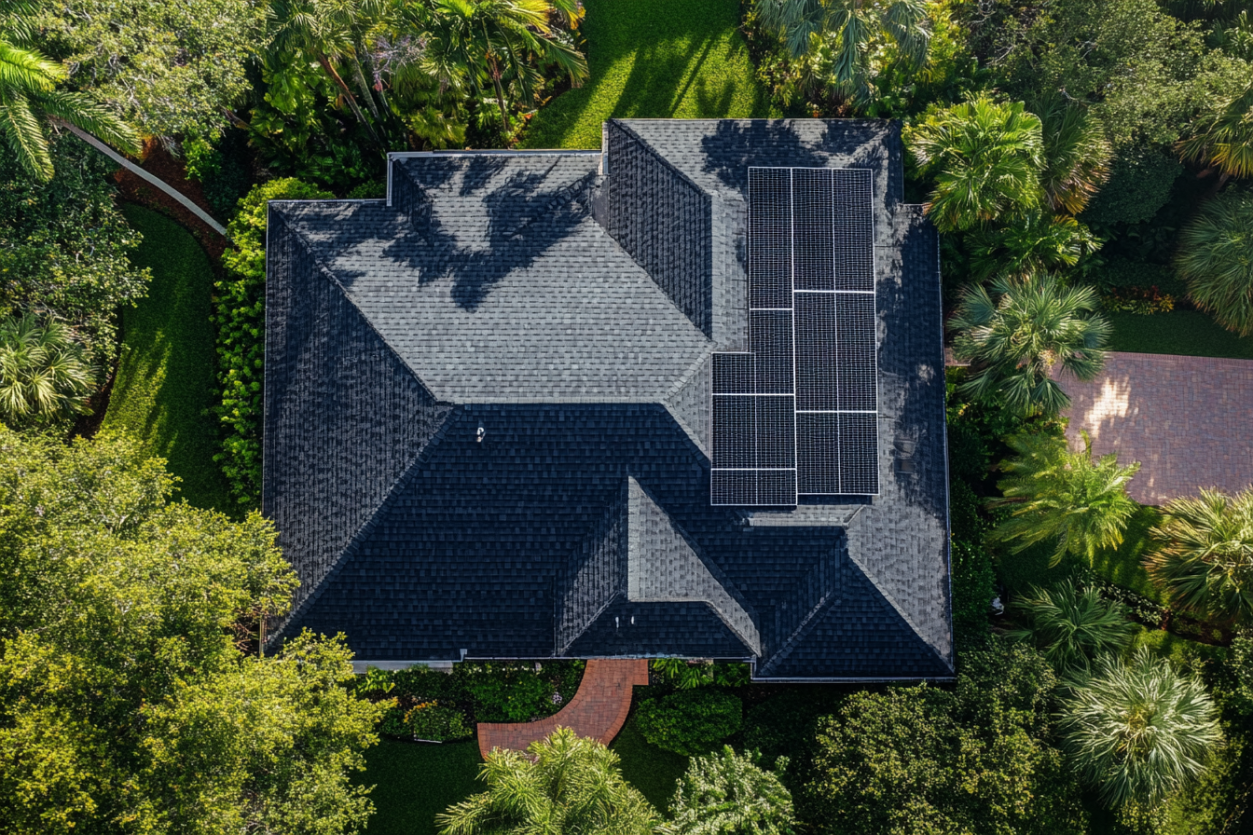
Signs It’s Time to Replace or Upgrade a Solar Roof
Even the best solar systems may need attention after a couple of decades. Look for these signs:
- Noticeable drop in energy production
- Physical damage to panels or roof
- Inverter malfunctions or warnings
- Outdated technology compared to new efficiency standards
If your system is approaching the 20–25 year mark, you may want to explore modern upgrades, such as higher-efficiency panels or integrated solar shingles, which can further increase your home’s energy independence and resale value.
How to Maximize the Life of Your Solar Panel Roof
To ensure your solar roofing system performs at its best for decades, follow these key maintenance and protection tips:
1. Schedule Annual Inspections
Have your solar system inspected yearly for wiring, mounting, and panel health. At AGU Roofing & Solar, we include inspection services with every solar installation package.
2. Keep Panels Clean
Dust, leaves, and debris can reduce energy output. Cleaning your panels once or twice a year—especially in pollen-heavy areas like Central Florida—helps maintain optimal efficiency.
3. Monitor Energy Output
Many systems come with apps or web portals for tracking performance. Monitoring helps you spot issues early, before they impact your utility savings.
4. Protect from Shade and Debris
Trim overhanging trees that could block sunlight or drop leaves on the panels. Even partial shade can significantly reduce panel efficiency.
The Long-Term Payoff of a Solar Roof
Given their durability and efficiency, solar roofs offer excellent long-term value. While the upfront investment may seem significant, the return over time is impressive:
Benefits Include:
- Thousands in energy savings
- Potential tax incentives and rebates
- Increased home value
- Lower carbon footprint
- Protection from rising utility rates
Depending on your system and electricity usage, many homeowners recoup their initial costs in 7–12 years, with decades of free energy production to follow.
Ready to Invest in a Long-Lasting Solar Roof?
So, how long do solar panel roofs last? With proper materials, professional installation, and routine care, most systems will reliably generate power for 25–30 years—or even longer. Solar roofing is more than just an eco-conscious choice—it’s a smart, future-focused investment in your home.
At AGU Roofing & Solar, we specialize in installing high-performance solar panels and integrated solar roofing systems designed to stand up to Florida’s weather and maximize long-term value. Whether you’re replacing your roof or exploring solar for the first time, we’re here to help you build a better, more energy-efficient future.
Get a free inspection now and find out how a solar panel roof can power your home for decades to come.

